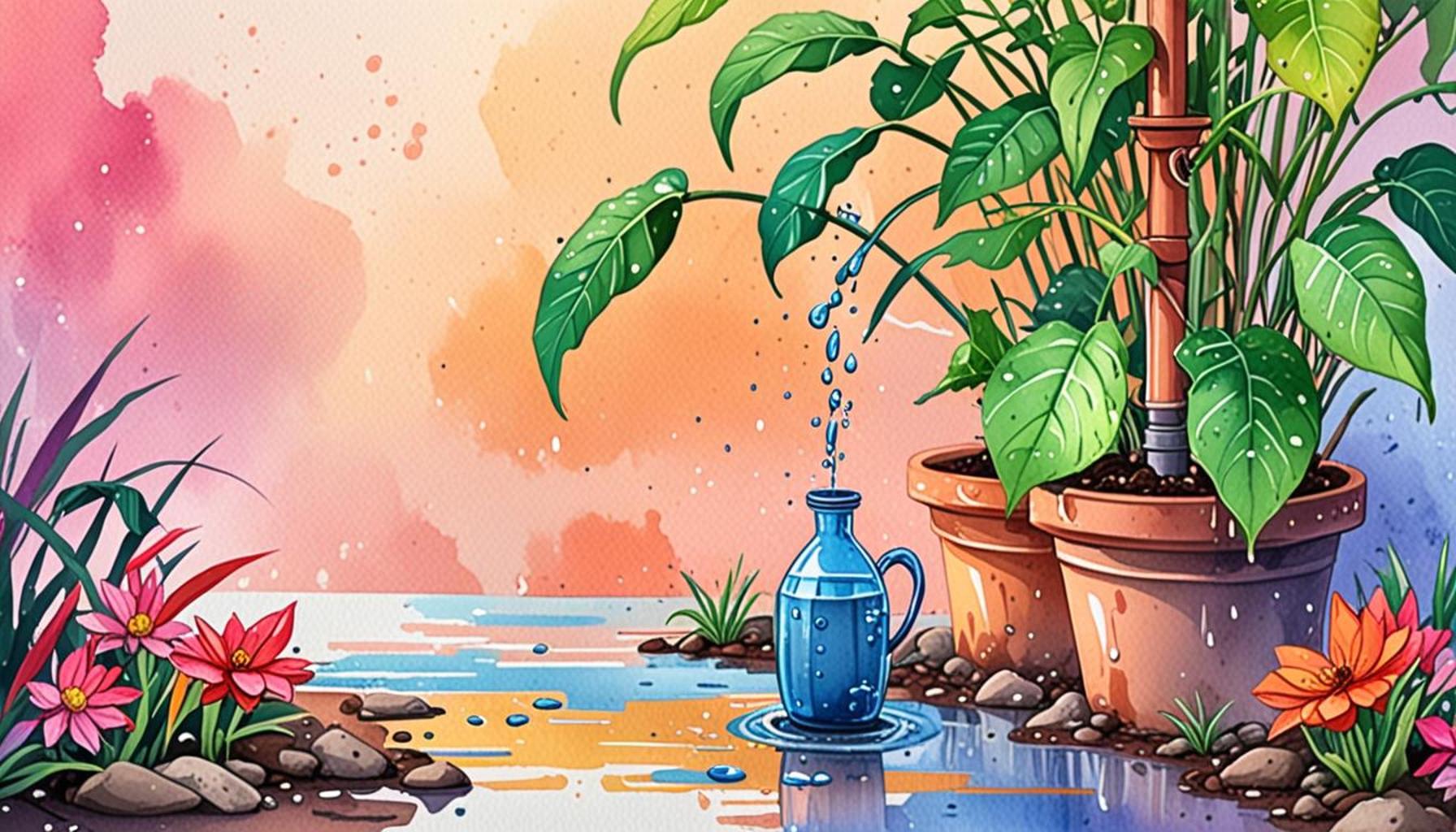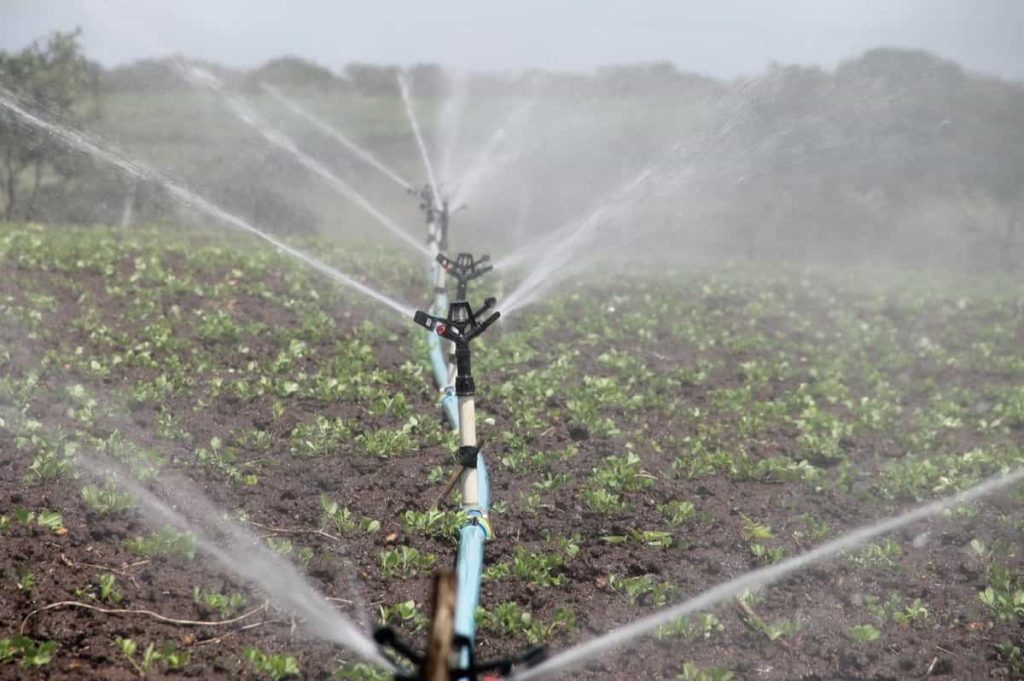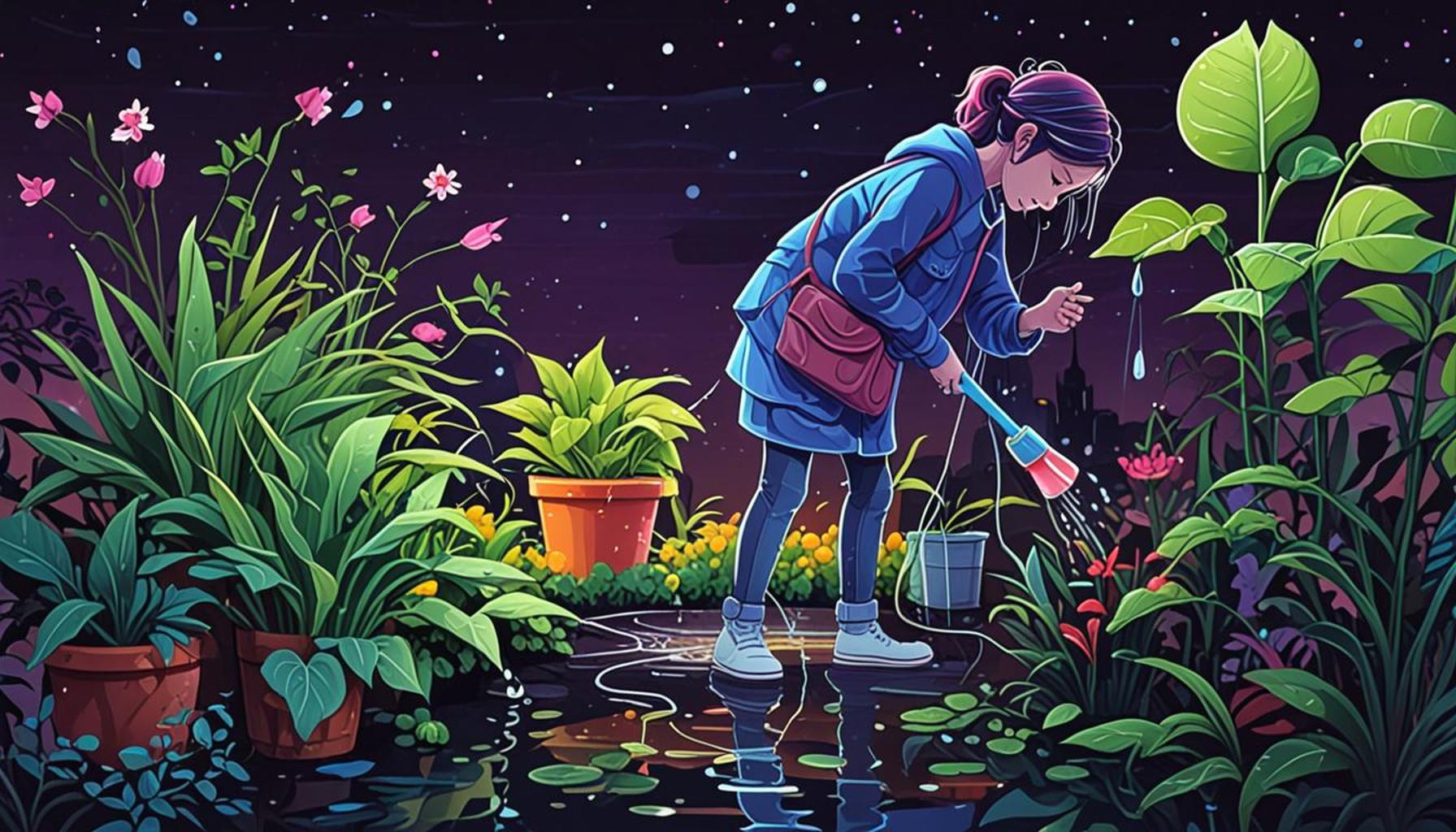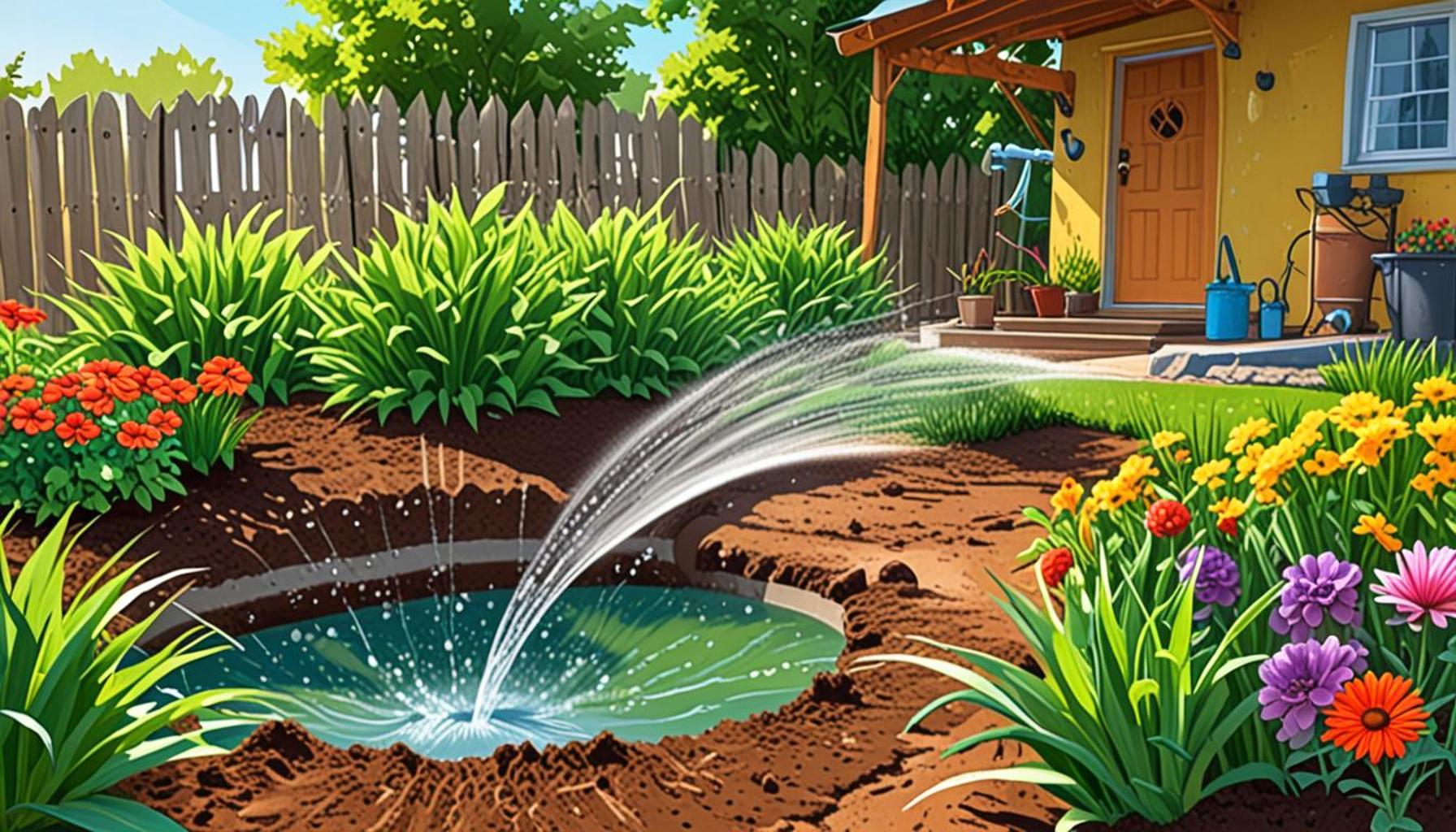Drip Irrigation: A Practical Guide for Beginners

Unlocking the Secrets of Efficient Watering
Are you ready to transform your gardening experience? Drip irrigation offers a solution that maximizes plant growth while conserving precious water resources. This innovative approach allows you to target the roots directly, reducing water waste and promoting healthier plants. The principle is simple: rather than flooding your garden with water, which can lead to runoff and evaporation, drip irrigation delivers water in a slow and steady manner right to the base of each plant, ensuring optimal moisture and nutrients are absorbed.
With the increasing emphasis on sustainable farming and gardening practices, understanding the basics of drip irrigation can be a game-changer. Here’s why you should consider this method:
- Water Efficiency: Drip irrigation systems can use up to 50% less water than traditional methods such as flooding or overhead sprinklers. This is particularly significant in regions prone to drought, where conserving water is not just a choice but a necessity.
- Reduced Weeds: By applying water directly to the soil at the roots of your plants, moisture on the surrounding soil decreases, which discourages weed growth. Fewer weeds mean less competition for nutrients and sunlight, allowing your plants to thrive.
- Versatile Application: Drip systems are adaptable, making them suitable for both small home gardens and larger agricultural fields. Whether you’re growing vegetables in your backyard or managing a vineyard, drip irrigation can be tailored to fit diverse planting arrangements.
- Easy Maintenance: Once installed, these systems require minimal upkeep, making them ideal for busy gardeners. Most components can last for years with basic care, ensuring convenience without compromising plant health.
Dive deeper into the world of drip irrigation and discover the various components involved, such as emitters, tubing, and filters. Understanding how to install the system effectively can lead to even better results. For instance, placing emitters at varying distances can cater to different plant species with distinct water needs, thus ensuring each plant receives just the right amount of moisture.
Maintenance is equally simple: regular checks for clogs in the emitters, cleaning filters, and monitoring water pressure will keep your system running smoothly. Gardeners in areas such as California or Texas, where water conservation is critical, have increasingly turned to these systems, enjoying lush, productive gardens while minimizing their water usage.
Explore the benefits of adopting drip irrigation in your own gardening practice and watch your plants flourish while taking a significant step toward sustainable gardening. This means not just healthier plants but also a healthier planet. As you integrate this system, you’ll not only enhance your gardening experience but potentially inspire others to follow suit, creating a ripple effect that promotes environmental consciousness in your community.

DISCOVER MORE: Click here to learn how to choose plants that flourish in your area
Getting Started with Drip Irrigation: Essential Components and Considerations
Embarking on your drip irrigation journey requires a foundational understanding of its key components and proper installation techniques. Whether you’re a seasoned gardener or a novice, learning how to assemble and maintain a drip irrigation system can significantly enhance your gardening experience.
The basic components of a drip irrigation system include tubing, emitters, connectors, filters, and pressure regulators. Each element plays a crucial role in ensuring water is delivered efficiently and effectively. Let’s break down these components to help you understand how they work together:
- Tubing: This is the main transportation route for water. Typically made from durable plastic, it comes in various diameters to accommodate the needs of your garden. Choosing the right size tubing is crucial, as it impacts water flow and pressure.
- Emitters: These devices control the release of water from the tubing to the plants. They can be pre-installed on the tubing or attached separately. Emitters vary in flow rates, allowing you to supply different plants with appropriate amounts of water based on their specific needs.
- Connectors: These components link different parts of the system together, enabling you to customize the layout of your irrigation setup. You may require straight connectors, tees, or elbows, depending on your garden’s unique arrangement.
- Filters: To prolong the life of your system and maintain efficiency, filters are vital as they remove debris and particles that could clog the emitters. Similar to an oil change for your vehicle, regularly cleaning or replacing filters can prevent costly repairs down the line.
- Pressure Regulators: These components adjust the water pressure to a desired level, ensuring that water is delivered consistently and gently to your plants. Without proper regulation, high pressure can lead to leaks or inconsistent watering.
Before diving into installation, it’s essential to assess your garden’s layout and water needs. Begin by mapping out the location of your plants and deciding how much water each type requires. For example, leafy vegetables like lettuce may need more frequent watering compared to succulents that prefer drier soil. Understanding these requirements allows you to strategically place emitters and adjust the system accordingly.
Next, consider the water source. Most home gardeners connect the drip irrigation system to an outdoor faucet or hose. Ensuring a steady and reliable water supply is vital for keeping your plants nourished throughout their growth cycles. You might also want to integrate a timer for automation, allowing you to schedule watering during cooler hours to minimize evaporation.
Establishing a drip irrigation system can appear daunting at first, but with careful planning and the right components, you’ll be well on your way to cultivating a thriving garden. As you familiarize yourself with these tools and techniques, remember that even slight modifications can lead to significant improvements in water efficiency and plant health. By becoming adept at setting up and maintaining your drip irrigation system, you are not just enhancing your gardening practices but also contributing to a more sustainable future for your local environment.
| Category | Advantages |
|---|---|
| Water Efficiency | Drip irrigation reduces water waste by delivering water directly to the plant roots, ensuring maximum absorption. |
| Fertilizer Optimization | This system allows for fertilizer application through the drip lines, reducing runoff and enhancing nutrient delivery. |
| Time Savings | Once set up, drip irrigation systems require much less maintenance, freeing up time for other gardening activities. |
| Pest and Weed Control | By limiting moisture in the surrounding areas, this method aids in controlling pests and weeds effectively. |
Understanding these advantages can not only improve your gardening experience but also help ensure a sustainable approach to agriculture. Embracing drip irrigation can lead to healthier plants and a more productive garden, making it essential for both beginners and experienced gardeners alike to explore its depths further.
LEARN MORE: Click here for seasonal soil preparation tips
Installation Tips and Best Practices for Your Drip Irrigation System
Once you have gathered all your essential components and mapped out your garden, it’s time to focus on the installation of your drip irrigation system. Proper installation is key to maximizing the efficiency and effectiveness of your irrigation setup. Below are some valuable tips and practices to guide you through the installation process.
First and foremost, consider the layout of your drip irrigation system. To ensure even coverage, it’s advisable to plan a grid-style layout, particularly in larger gardens. This method allows for uniform water distribution and minimizes dry spots where plants may struggle to thrive. To accomplish this, lay out the main tubing in rows that correspond with your plant spacing, creating a clear path for water to flow directly to their roots.
When installing your emitters, take into account the specific water needs of each plant type. For instance, vegetables like tomatoes may require a higher flow rate, whereas herbs might thrive with a slower drip. A common rule of thumb is to space emitters about 12 to 18 inches apart for standard plants, while for more water-demanding plants, you might want to include emitters every 6 to 12 inches. Be sure to actually test your emitters after installation to ensure they’re functioning efficiently and delivering the right volume of water.
Another critical aspect of installation is adjusting the depth of the tubing. Aim to place the tubing below the soil surface in raised garden beds or borders to protect it from sun exposure and physical damage. This not only increases longevity but also reduces evaporation, allowing for improved water retention in the soil. Wrapping the tubing in mulch can further help retain moisture and shield it from harmful elements.
Utilizing Automation for Effortless Gardening
As a novice gardener, you may feel overwhelmed by the consistent maintenance required to keep plants healthy. Fortunately, automation can simplify the process. Installing a timer is one of the most effective ways to ensure your plants receive regular watering without additional effort. Options vary from simple mechanical timers to advanced digital units, which allow you to customize watering schedules and durations specific to different garden sections.
Additionally, consider integrating a smart irrigation controller, which utilizes weather data to determine optimal watering needs based on real-time conditions. Such systems can automatically adjust the watering schedule, ensuring that you achieve savings in both water consumption and utility costs. Studies indicate that using automated systems can reduce water usage by up to 30%, helping both your plants and your budget.
Maintenance: Keeping Your Drip Irrigation Healthy
Maintenance is crucial to the longevity of your drip irrigation system. Inspect your setup regularly to check for clogs, leaks, or damaged tubing. If you notice any emitters not functioning properly, cleaning them with a vinegar solution can often resolve the issue. Regularly flushing the system can also help prevent buildup from minerals and debris, ensuring a smooth flow of water.
Lastly, don’t overlook seasonal adjustments. In hotter months, your plants may require more frequent watering. Use a soil moisture meter to accurately gauge when and how much to water. During colder months, further adjustments may be necessary, as the water needs of your plants will likely change. Being proactive about maintenance and monitoring will set you up for gardening success with your drip irrigation system.
DISCOVER MORE: Click here for tips on selecting the perfect indoor plants
Conclusion: Cultivating Success with Drip Irrigation
In summary, drip irrigation stands as a game-changing technology for beginner gardeners seeking to conserve water while providing effective nourishment for their plants. By following the guidelines laid out in this article, from planning your layout to mastering the art of installation, you can significantly enhance your gardening experience.
Moreover, embracing automation in your irrigation system not only takes the guesswork out of watering but also aligns with sustainable gardening practices. With tools like timers and smart controllers, you can ensure that your plants receive consistent and tailored hydration, all while minimizing waste. Remember, gardening should be a joyful endeavor, and simplifying your routine can lead to fuller, healthier gardens.
Regular maintenance of your drip irrigation system is crucial in securing a long-lasting investment. With careful monitoring and timely interventions, you can prevent clogs and leaks, ensuring that each droplet counts. As seasons change, adapting your watering schedule to meet your plants’ evolving needs will not only nourish their growth but also deepen your understanding of the delicate balance of nature.
Now that you’re equipped with the knowledge and insights to set up your own drip irrigation system, dive into your gardening journey with confidence. With the right practices in place, you’ll not only cultivate a thriving garden but also contribute positively to water conservation efforts. So roll up your sleeves, get your hands in the soil, and let your garden flourish with the advantages of drip irrigation!



